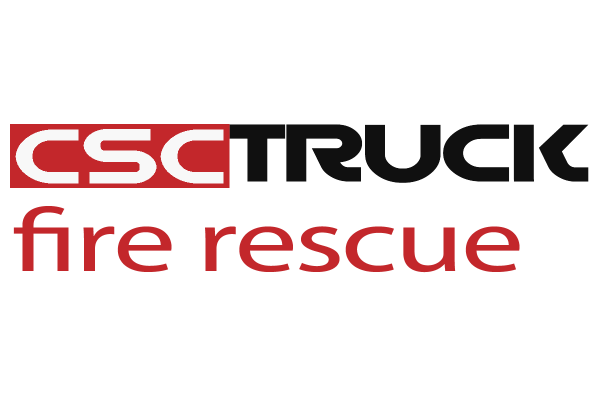In our daily lives, we usually see the finished versions of dual-cab (double-headed) fire trucks, and it’s rare for people to see what the dual-cab chassis looks like before the body is installed. This time, let’s take a look at the MAN TGM18.340 dual-cab chassis.
Compared to a finished vehicle with the body installed, showcasing just the chassis allows the audience to better appreciate the technical sophistication of the dual-cab design. The main cab is the double-row seating side, with a total of 6 seats, while the auxiliary cab is the single-row side, with only 2 seats.
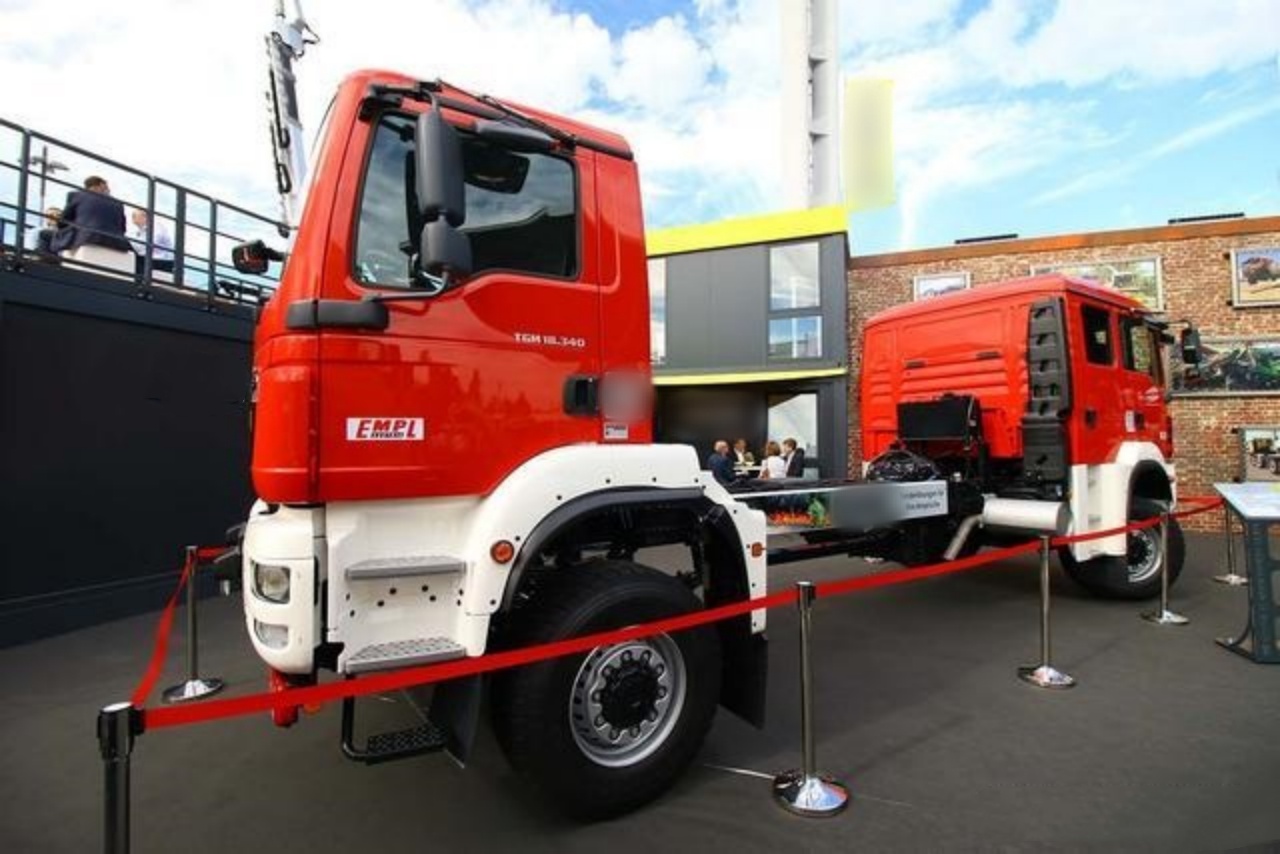
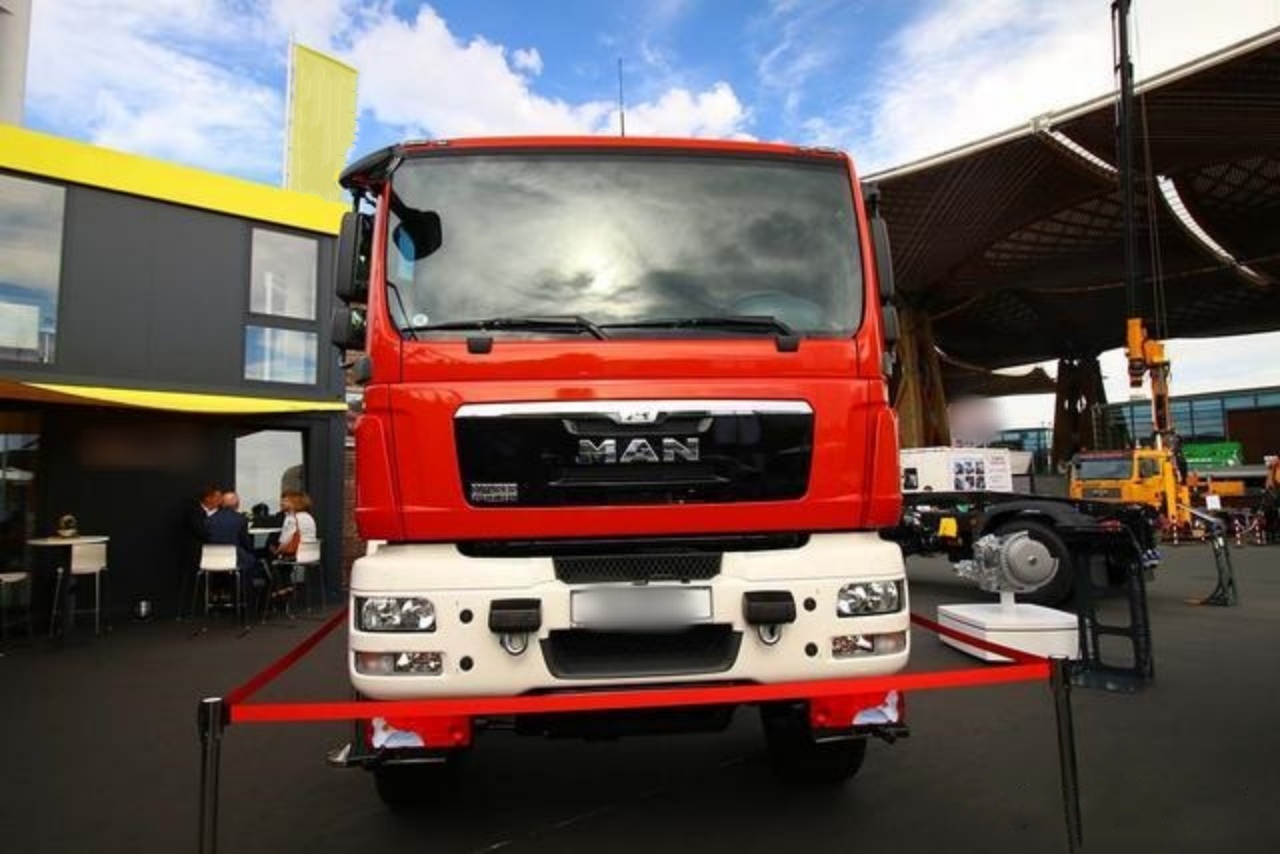
Because this is a dual-cab chassis, both the front and rear bumpers are equipped with tail lights. This is to warn following vehicles and prevent them from becoming overly distracted and causing rear-end collisions.
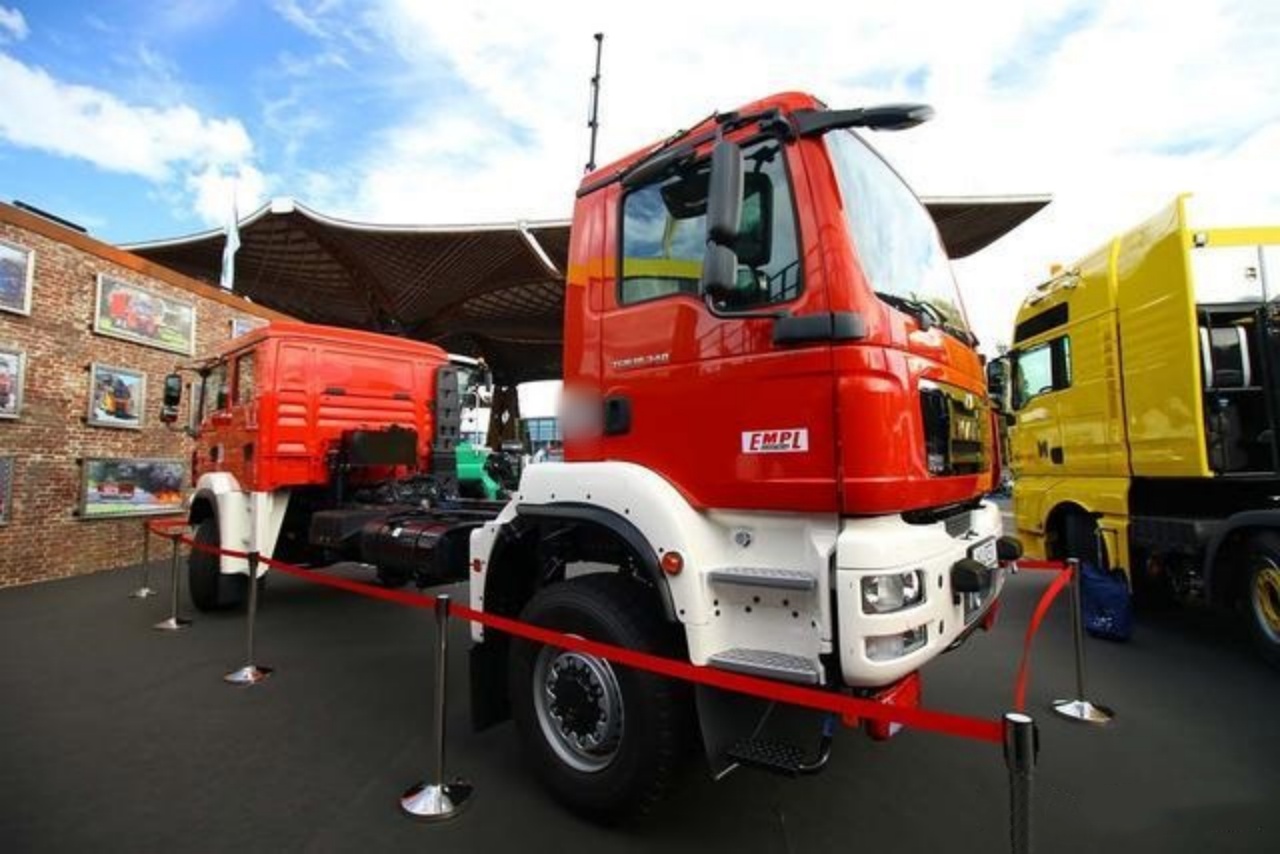
From the model name, it’s clear that the MAN TGM18.340 dual-cab chassis belongs to the medium-duty truck category. It has a gross vehicle weight rating of 18 tons and a maximum output of 340 horsepower. It uses MAN’s widely adopted 6.9-liter inline six-cylinder diesel engine in the firefighting chassis market, delivering a peak torque of 1,250 N·m.
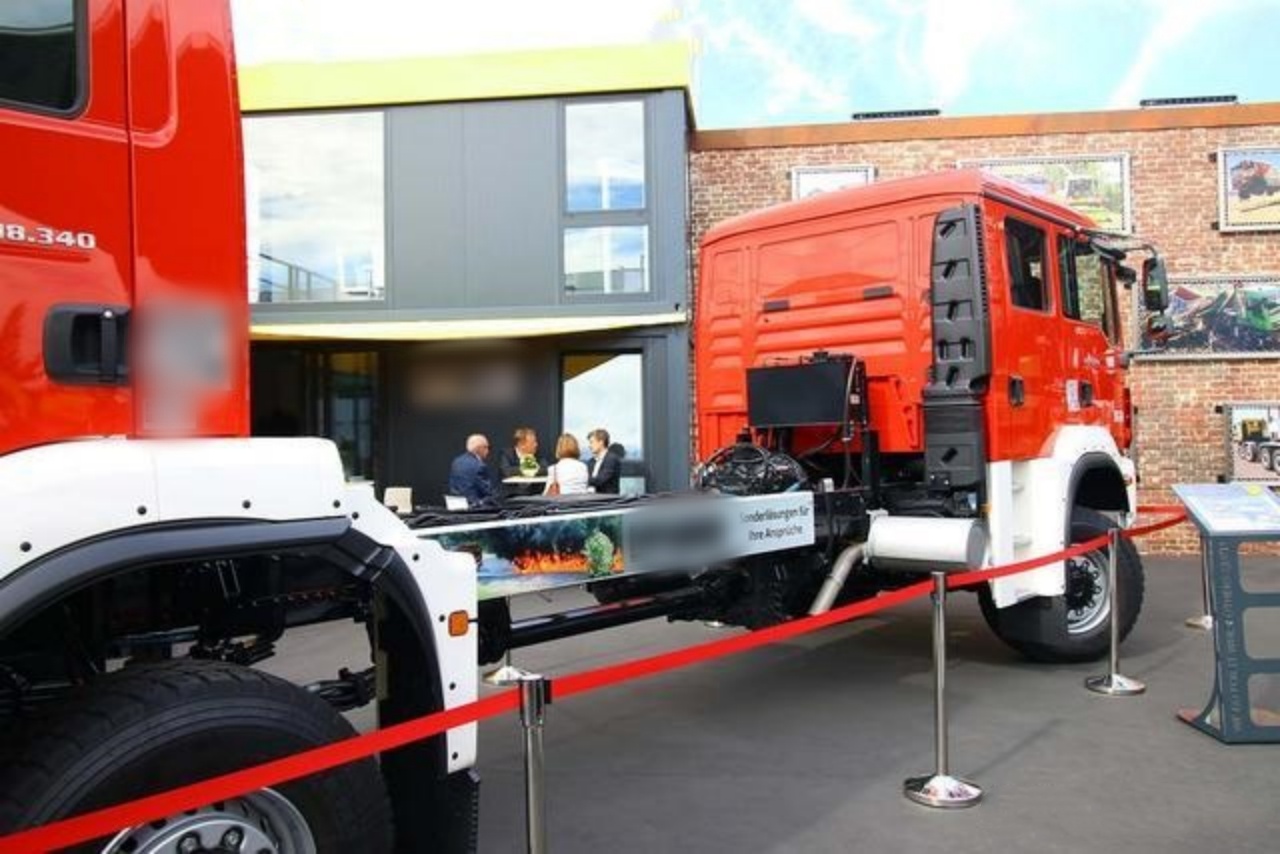
The location of the air filter indicates that the engine of this TGM18.340 dual-cab chassis is installed beneath the double-row cab, confirming that the double-row cab is the main cab. For some reason, people always ask: “What happens if both sides try to drive at the same time?” Are they trying to sabotage the vehicle? Sorry, the system doesn’t allow that. When the dual-cab fire truck is in motion, only 1 side is operational—controls on the other side are completely locked.
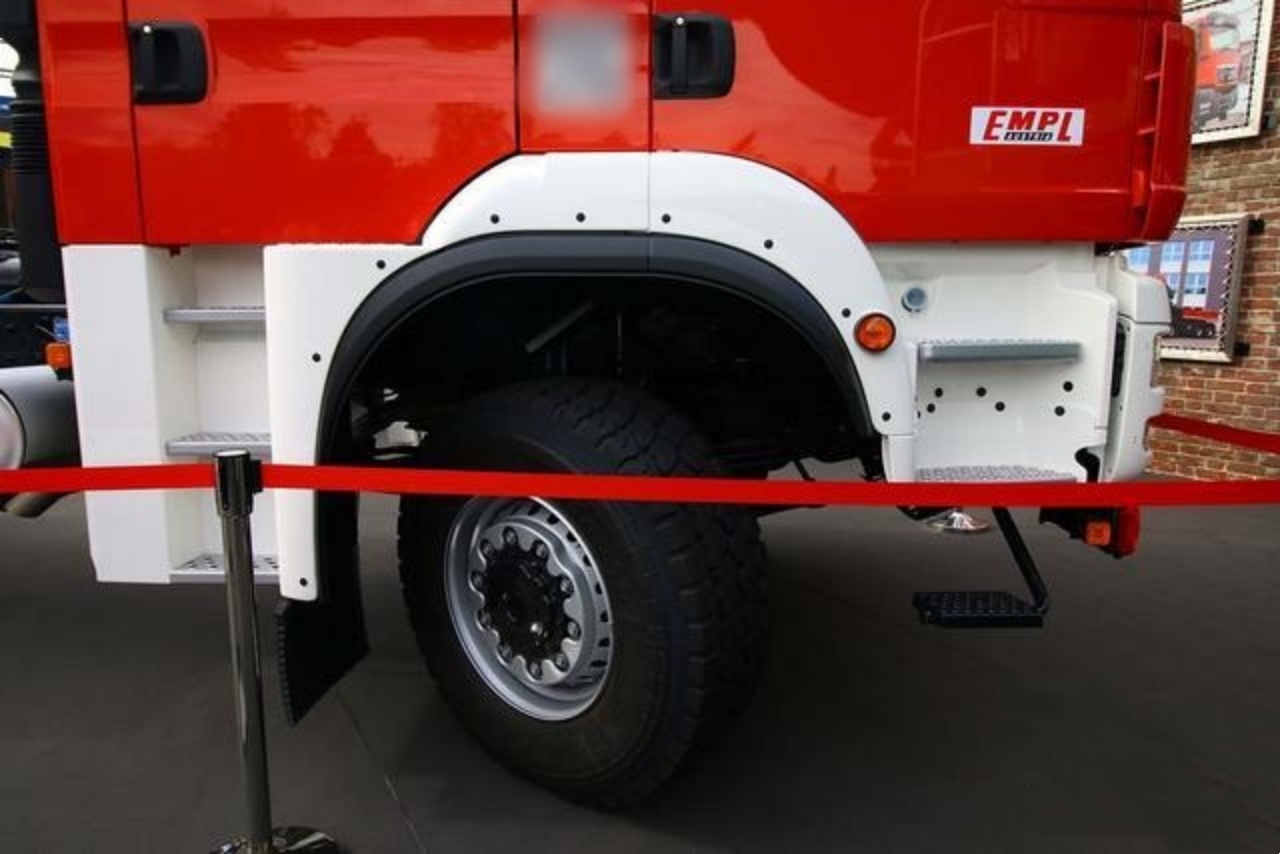
Due to its unique body layout, this MAN uses a 4WD chassis, with MAN hub reduction axles at both front and rear. It is equipped with ultra-wide Michelin 385/65 R22.5 tires. The truck features a special 3-mode steering system: Front-wheel steering mode, rear-wheel steering mode, and 4-wheel steering mode. The 4-wheel steering minimizes the turning radius to the greatest extent possible, making it ideal for maneuvering on narrow roads during operations.
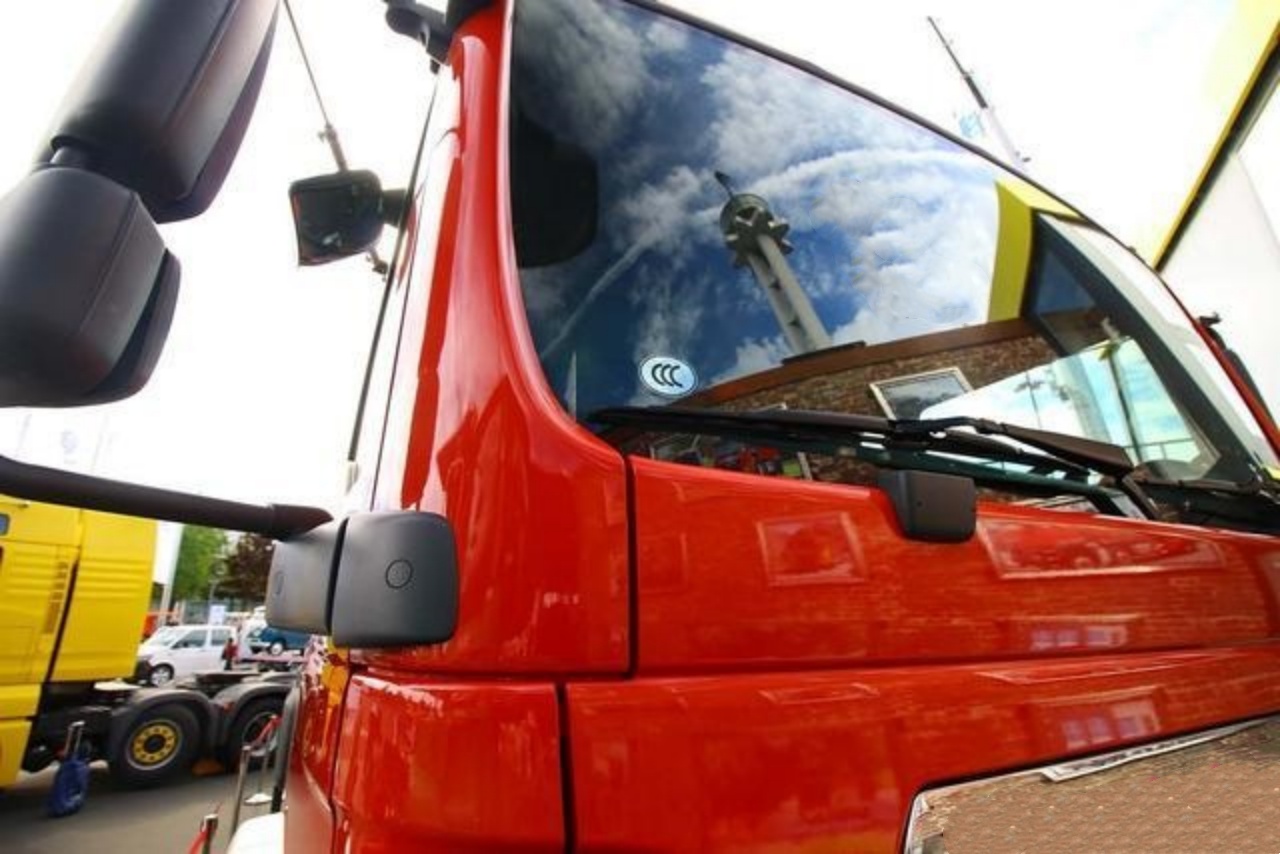
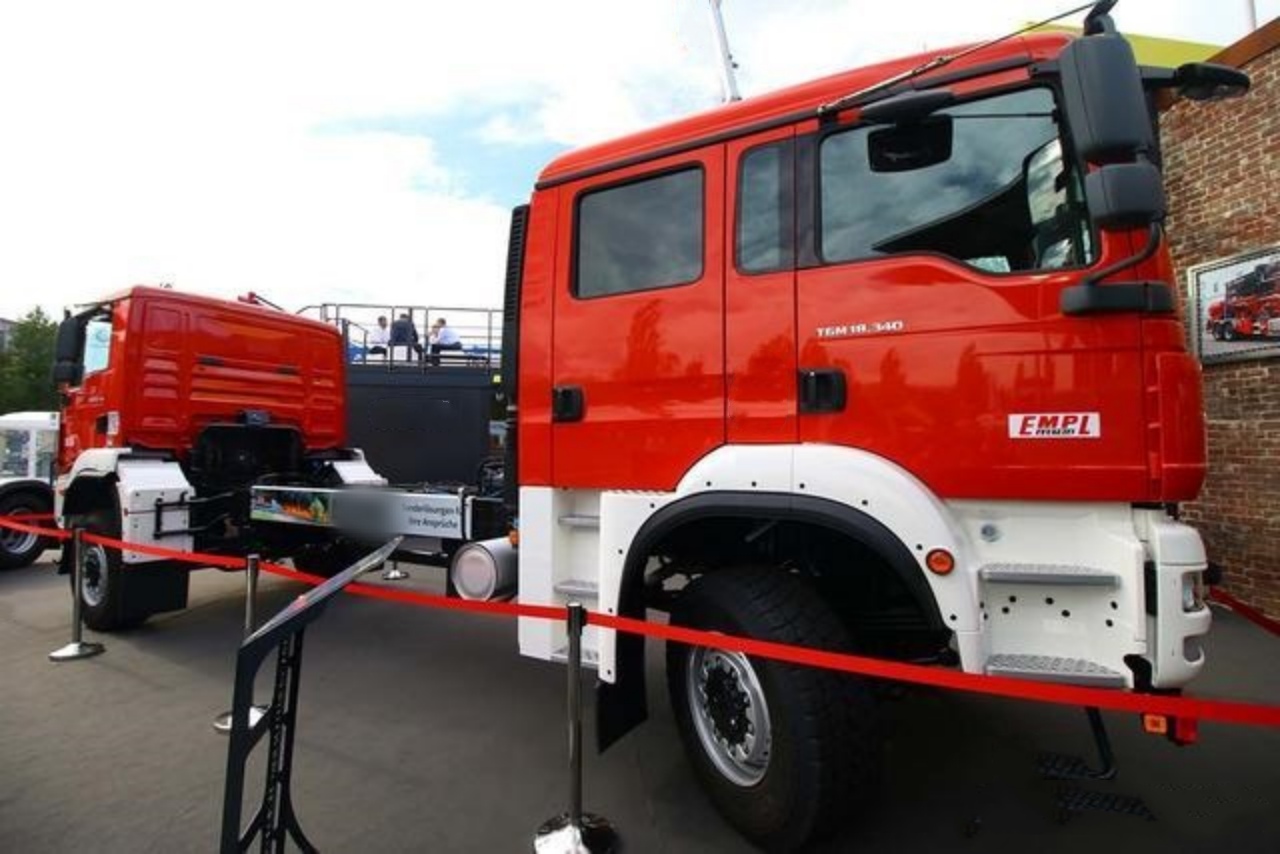
The space between the 2 cabs is the stage for the body manufacturer to showcase their capabilities. Installing an aluminum fire equipment compartment and incorporating various firefighting functions in such a compact area is a result of years of technical expertise and experience from the manufacturer.
The primary purpose of a dual-cab fire truck is to respond to tunnel fires. Because tunnels are narrow and confined, if a serious accident occurs, a dual-cab fire truck can quickly retreat from either end.
